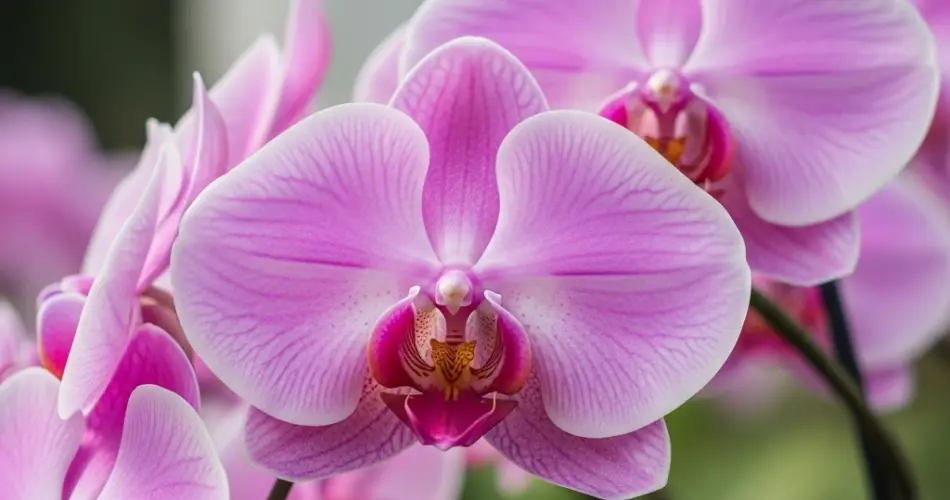Orchids are often seen as delicate and mysterious plants, but with the right approach, they can reward you with striking blooms all year long. While many people struggle to keep their orchids alive after the initial flowering, seasoned indoor gardeners know that it’s all about understanding the plant’s rhythm and creating an ideal environment.
Whether you’re growing Phalaenopsis, Dendrobium, or Cattleya, here’s a complete guide to help you develop orchids that flourish and bloom repeatedly throughout the seasons.
Understand Your Orchid’s Natural Cycle
To encourage year-round flowering, you first need to understand the natural growth cycle of orchids. Most orchids go through four stages:
-
Leaf growth – when the plant builds strength through foliage.
-
Spike development – the flower stem begins to form.
-
Blooming – flowers open and remain for several weeks to months.
-
Rest period – the plant conserves energy before repeating the cycle.
The goal is to provide conditions that support each of these stages without interrupting the plant’s rhythm.
Choose the Right Light
Orchids are light-loving plants, but they don’t do well in direct sunlight. The ideal setting is bright, indirect light—such as what you’d get from an east-facing window or behind a sheer curtain on a sunny windowsill.
If your orchid isn’t blooming, insufficient light is likely the culprit. Orchids need at least 6–8 hours of filtered light daily to encourage flower spike development. If natural light is limited, consider using a full-spectrum grow light for 12–14 hours a day.
Maintain Ideal Temperatures
Temperature plays a major role in triggering orchid blooms. Most orchids prefer daytime temperatures between 21°C and 27°C (70°F–80°F), and nighttime temperatures around 15°C to 18°C (60°F–65°F). A slight drop in nighttime temperature—especially in fall—can stimulate blooming in varieties like Phalaenopsis.
Avoid placing orchids near drafts, radiators, or air conditioning vents, as sudden temperature shifts can cause bud drop or stress.
Use Proper Watering Techniques
Orchids don’t like to sit in soggy soil. Their roots need both moisture and air. The best approach is to water thoroughly but infrequently.
-
Water when the potting medium feels dry an inch below the surface.
-
Use lukewarm water and let it run through the pot’s drainage holes.
-
Always empty the saucer underneath to prevent root rot.
Overwatering is one of the most common mistakes with orchids. Depending on your climate, watering once a week may be sufficient.
Boost Humidity for Better Blooms
Most orchids originate from tropical regions and thrive in high humidity—ideally between 50% and 70%. To maintain proper moisture in the air:
-
Use a humidity tray (a shallow dish filled with pebbles and water).
-
Group orchids together to create a humid microclimate.
-
Mist the air around the plant, not the flowers or leaves directly.
-
Run a room humidifier during dry seasons.
Proper humidity not only supports healthy growth but also prolongs the life of orchid blooms.
Fertilize Consistently (But Carefully)
To promote regular flowering, orchids need to be fed. Use a balanced orchid fertilizer (such as 20-20-20) every two weeks during active growth. Once the plant is in bloom or during rest periods, reduce feeding to once a month.
Always dilute the fertilizer to half the recommended strength to avoid burning the roots. Flush the pot with plain water every few weeks to prevent salt buildup.
Repot When Necessary
Orchids typically need repotting every 1–2 years, especially when the potting mix starts to break down or the roots become crowded. Repotting encourages healthy growth and can stimulate blooming.
Use a fresh orchid mix made of bark, perlite, and sphagnum moss. Avoid standard potting soil, which retains too much moisture.
Repot just after the flowering cycle ends, not during bloom.
Prune Spent Flower Spikes
Once your orchid finishes blooming, don’t toss it away—pruning can encourage reblooming. For Phalaenopsis orchids:
-
Cut the flower spike just above a node (a small bump on the stem).
-
A new spike may emerge from this node in a few weeks.
For other orchid types, it’s better to remove the spike completely after the flowers fall off, allowing the plant to focus on new growth.
Troubleshooting Common Blooming Issues
-
No blooms despite healthy foliage? Likely a light or temperature issue.
-
Bud blast (buds fall off)? Caused by drafts, overwatering, or environmental shock.
-
Leaves turning yellow? Often due to excess light or improper feeding.
Observing the plant closely and adjusting your care can restore blooming quickly.
Final Thoughts
Orchids aren’t as high-maintenance as many people think. With the right balance of light, water, temperature, and nutrition, your orchid can become a repeat bloomer that brings elegance to your home all year long. Whether you’re a beginner or a more advanced grower, developing orchids for vibrant year-round blooms is a deeply rewarding experience.



